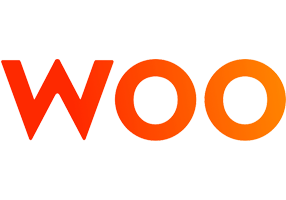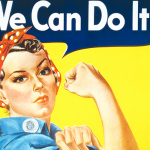Unconscious bias reflects on the overall success of a company.
Think about it.
A diverse workplace leads to a work culture that incorporates basic human principles, and promotes diversity of ideas and perspectives.
And that means increased creativity, better understanding of consumers, more productive brainstorming sessions, and above all, a place made up of teams that strengthen one another.
Talk about an ideal workplace!
But unfortunately there are many problems.
For example, your workplace isn’t as diverse as it could be because potential candidates haven’t even made it to the screening process. And it’s probably because of common biases you have no idea you’re making.
In this post you’ll get some quick and simple tips to conquer your unconscious bias and ensure you’re in a diverse workplace.
First we’ll look at the screening process.
Avoiding Bias During Screening
In the past, the only way to prevent yourself from discriminating against a person during the search and screening process was to become aware of it.
Unconscious bias often takes place in everyday details; A candidate’s name, education, work experience, and even their address.
A recent meta-study (i.e. a review of multiple studies), found that hiring discrimination against African-Americans hasn’t changed in the last 25 years, while Latinos have seen only a moderate drop in discrimination against them. This means that African-Americans and Latinos have to work harder to get an interview, even if they are just as well-qualified for a position.
One of the studies shows that: “Job applicants with white names need to send about 10 resumes to get one callback; those with African-American names need to send around 15 resumes to get one callback. A job applicant with a name that sounds like it might belong to an African-American – say, Lakisha Washington or Jamal Jones – can find it harder to get a job.” The 50 percent gap in callback rates is statistically very significant.
The steps taken to overcome these biases often involved hiding these elements from view when reviewing a candidate’s resume to gain a partial perspective.
The same factors still apply today, except there are some new advanced tools to help.
The Introduction of Machine Learning
Now there are tools that search and screen candidates for you. A lot of them use some form of AI to filter out candidates and match you to relevant ones.
While new advanced screening tools help you save a ton of time in the process, they doesn’t always help in boosting diversity.
That’s because creating an AI powered recruiting tool involves a team of humans teaching a mechanism to screen candidates. Which results in it mimicking the team’s biases as well.
There are tools that manage to bypass these biases. Machine learning tools for recruiting learn how to avoid these biases entirely.
At Woo.io, for example, steps are taken to neutralize the potential biases in the machine learning technology. All of Woo’s data is produced internally by the recruiting team.
In order to combat bias and discrimination, Woo does not just limit themselves to solely what the team is doing. They are also performing experiments to teach the system a wider variety of recruitment options.
And this enables companies to reach a more diverse group of qualified and engaged candidates.
Avoiding Bias During the Interviewing Process
Even if you have managed to avoid bias during the screening process, it can manifest itself during the interview process. Here are some tips on how to avoid bias:
- Standardize the interview process – it is important to be deliberate about not letting unconscious biases into the interview. One way to do it is to prepare yourself, by writing down the questions that you will ask during the interview.
- Take a lot of notes – in most cases, the decision to hire will be taken after the interview. If you rely on your “impression” only, you are likely to reject a candidate based on bias. Taking a lot of notes will help you make a more informed and objective decision.
- Try to justify your decision – let’s say you want to reject a candidate. Before you actually do it, try to ask yourself exactly why you have decided to do so. If your decision is based on objective criteria (which is based on the notes that you have taken), then you are ok.
- Get input from others – another method, whenever possible, is to have someone else sit in during the interview or at least provide them with all the relevant information, including the notes, and ask for their opinion.
Promoting Diversity
If you want to be successful at creating a diverse workforce, there are a few things to keep in mind.
For starters, it’s important to stop looking for people who are like you, people that you’d want to hang out with.
Instead become open to finding people with different personalities. Because those people bring with them different experiences, a fresh way of approaching a problem and solving it that can prove to be better fitted to the job you need to fill.
Be flexible when it comes to a candidate’s background and experience. You’ll be surprised at where your best hires will come from. And the more creative you allow yourself to become, the higher chance you have to reach different people.
Conclusion
If you want to ensure your workplace is a diverse one, start by creating a non-discriminatory screening process.
Prevent the common biases from occuring against a person’s name, education, address.
Become aware of these biases and take measures to hide information that could unconsciously sway you.
Go one step further and use a recruiting tool that relies on machine learning to screen candidates for you.
Next, make sure your interview process is bias-free. Standardize your questions, take notes, justify your position and ask for the opinion of others.
Adding a deliberate non-bias interviewing process will ensure stronger and more diversified hires.



